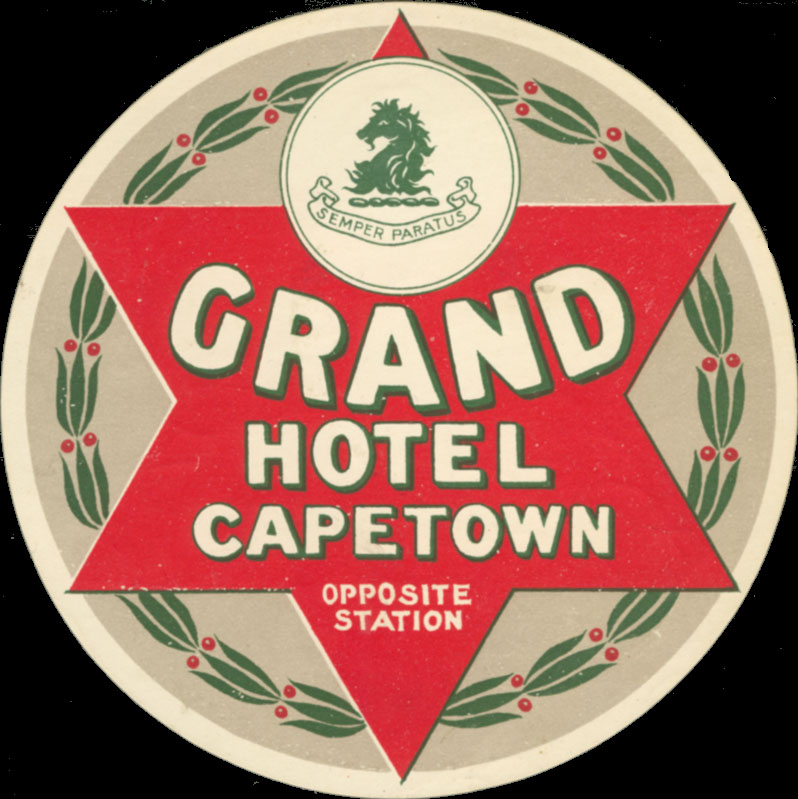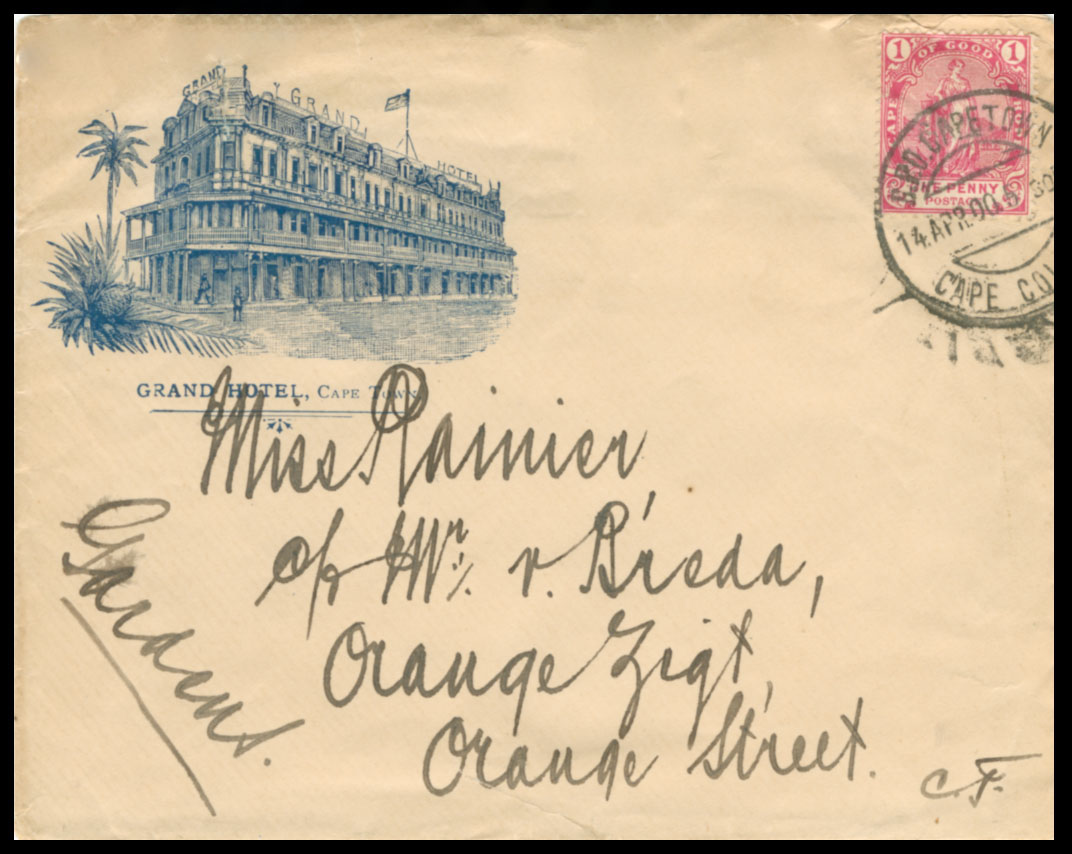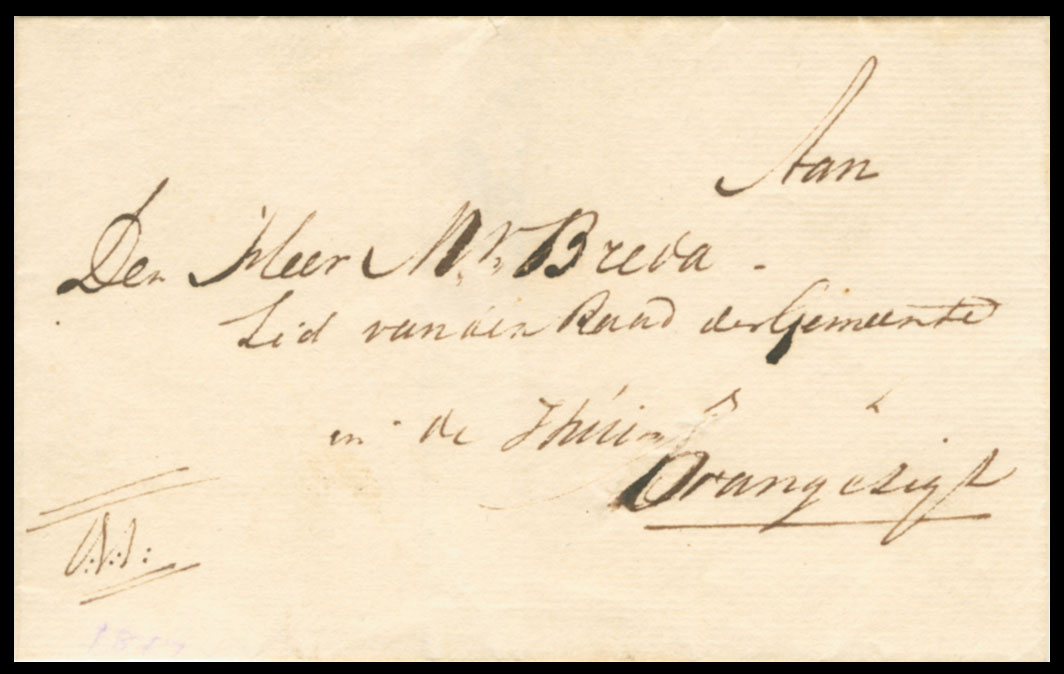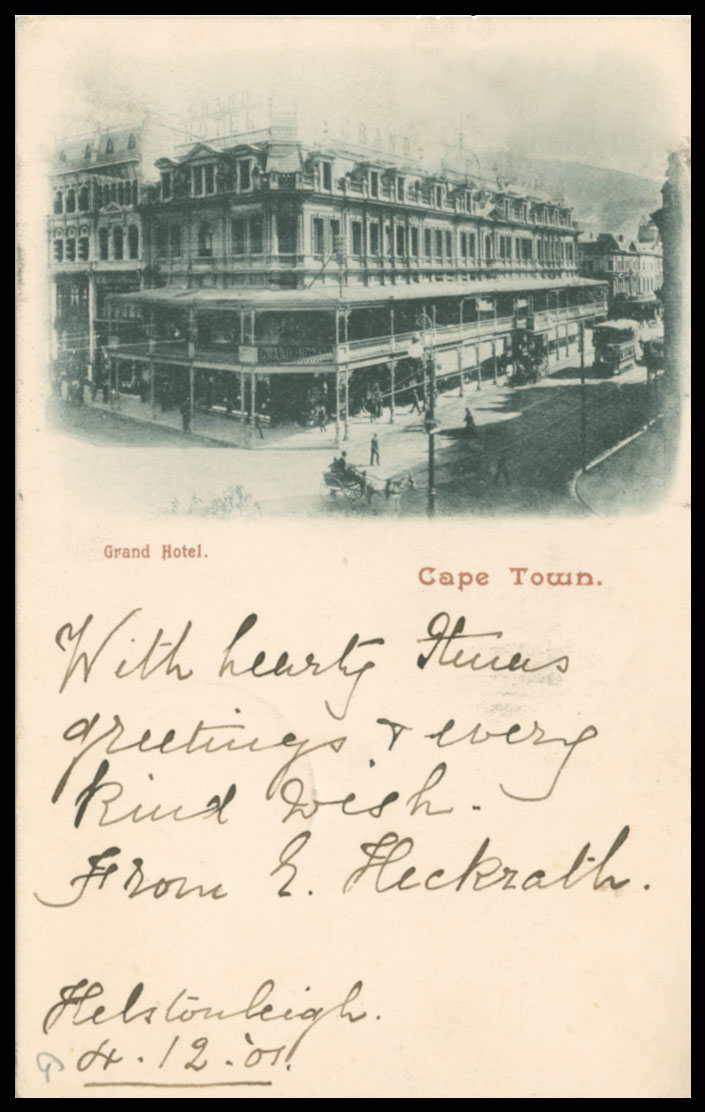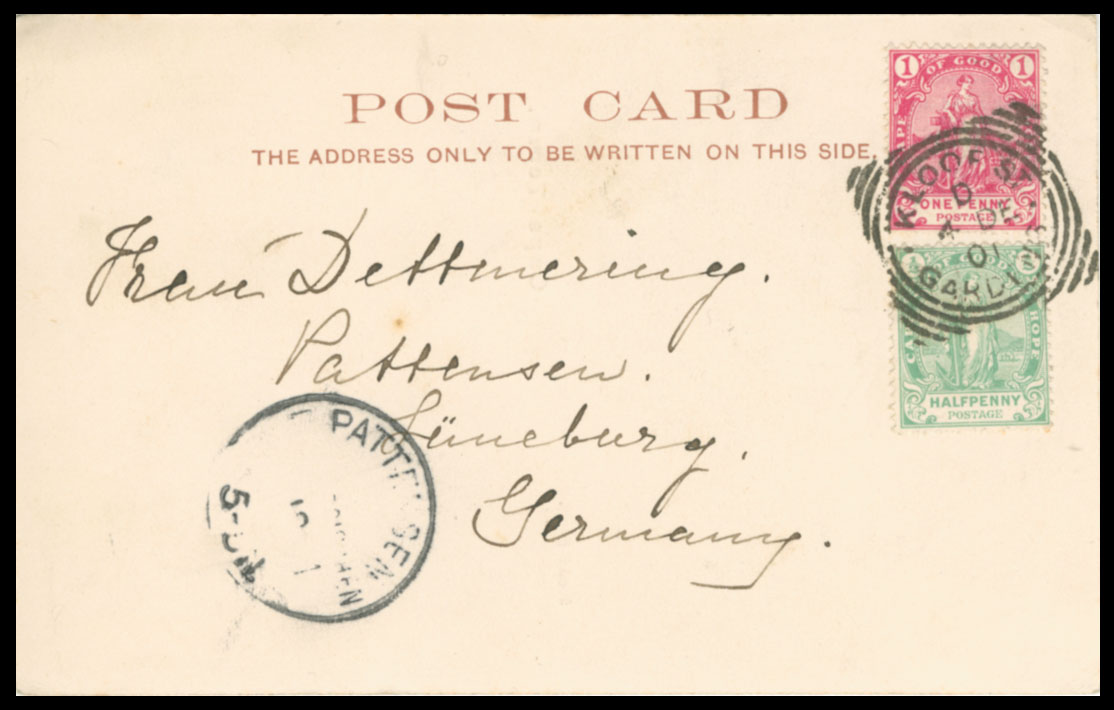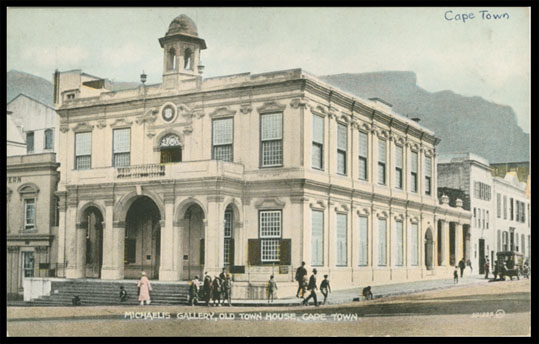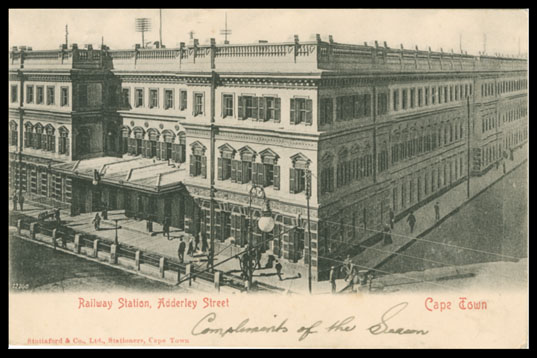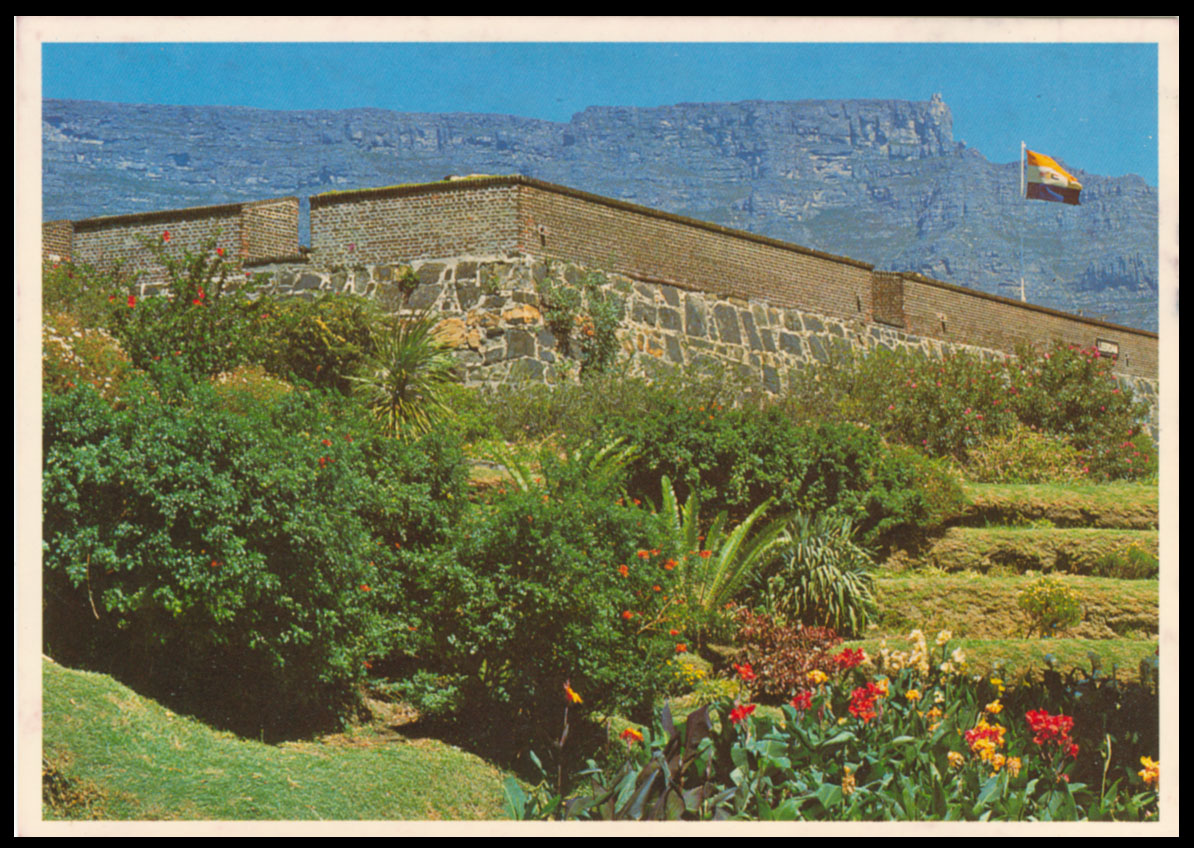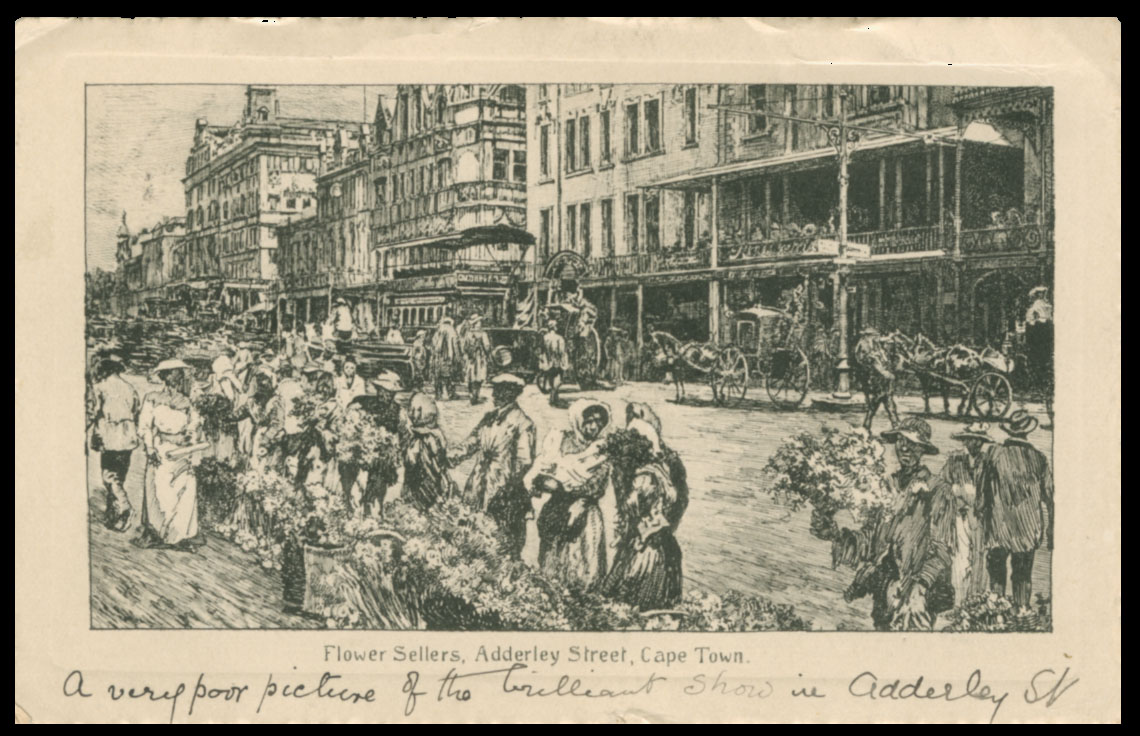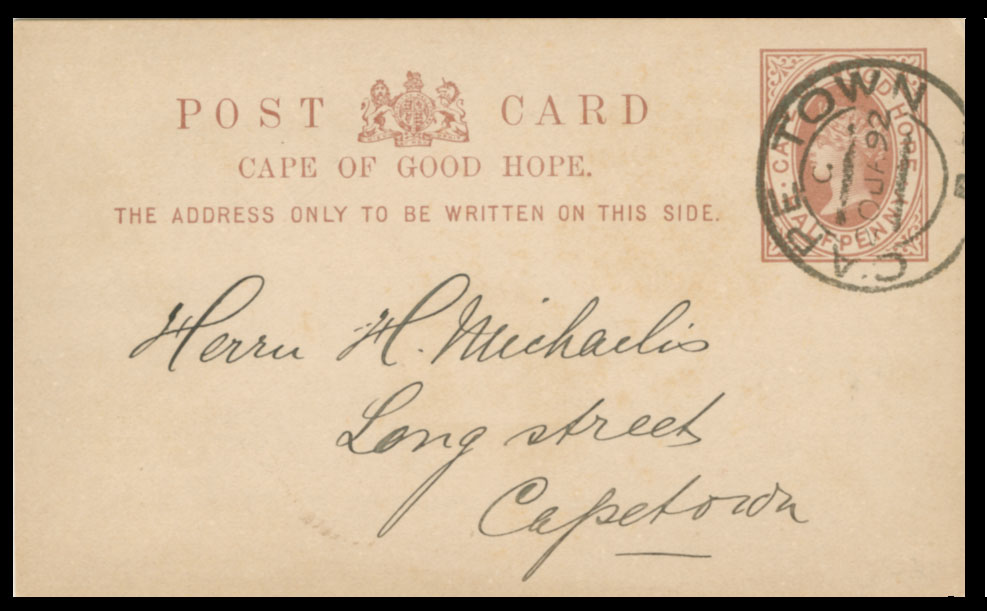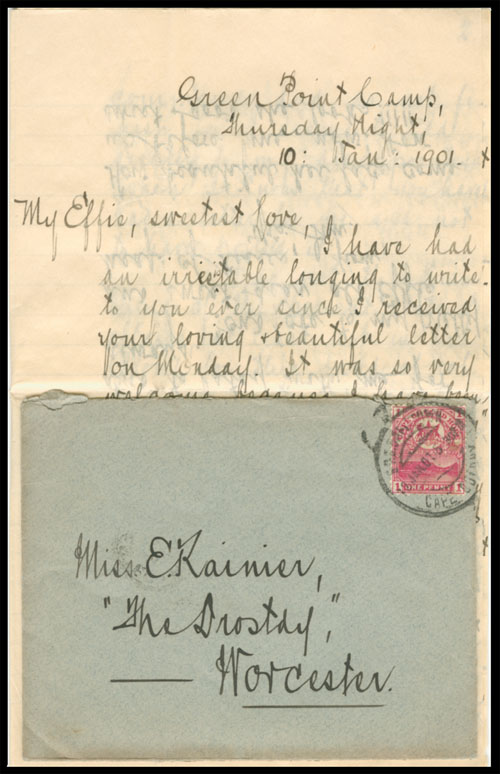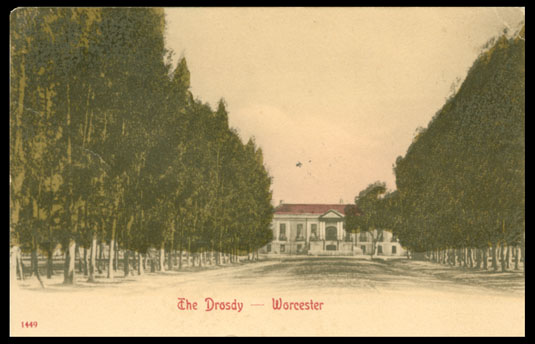IMAGES OF THE MONTH - MAY 2020 No. 2 - Grand Hotel, Cape Town
Quote from Steve on May 14, 2020, 9:15 amThis post was unintended but when I found this Grand Hotel luggage label, I sighed with nostalgia. It is probably from the 1950s, a time when it was still fashionable to plaster one's luggage with labels that showed how well-travelled and well-heeled you were.
I have fond memories of the Grand Hotel as an impressive Victorian building on the corner of Adderley and Strand Street, opposite the entrance to the main-line section of the old station. Designed as a British-style 'terminus hotel', it was built by the Union shipping line in 1894 to provide comfort to travellers at the start and or end of a long journey. It was close to the Docks for those travelling by ship and even closer to the railway station for those embarking on an overland train journey to Kimberley, Johannesburg and beyond. With electric lighting, a lift, carpetting throughout and a 250 seat dining room offering French cuisine, no other hotel in Cape Town matched it at the time. (The Mount Nelson had not yet opened.) The 'Grand' truly lived up to the wrought iron name on its roof.
In 1970 I used to meet my friends there on Saturdays at noon and sit on the balcony looking down on the hustle and bustle of the street below listening to live and piped-in music. My memories of the Grand Hotel are tied to the sound of music, mostly Blue Mink's 'Melting Pot' whose lyrics were deeply subversive in Apartheid SA where racial separation was the law. "What we need is a great big melting pot, big enough to take the world and all it's got and keep it stirring for a hundred years or more, and turn out coffee colored people by the score". These lyrics would have shocked the verkramptes (Afr. cramped, narrow-minded people) to the core had they dared their mortal souls to listen. But the strange thing about the times we live in today is that this song is no longer politically correct. Despite it (and others) kick-starting a Western inter-racial lovefest, it is no longer acceptable to talk about people in the language of the song - "take a pinch of white man, wrap it up in black skin, add a touch of blue blood and a little bitty bit of Red Indian boy, curly Latin kinkies mixed with yellow Chinkees". I memorised those lyrics on the balcony of the Grand Hotel.
When I dug out the cover advertising the Grand Hotel, I recognised the distinctive hand-writing as the same as that on covers in my Simons Town display. Indeed, the addressee is the same, Miss Effie Rainier. My Simons Town covers are entires (letters and covers) from the writer addressed to her at the Drostdy in Worcester where her family were wealthy and influential land-owners. Her grandfather, John Rainier, had been an English Captain with the occupying 98th Regiment of Foot who settled at the Cape, married a Cape Dutch girl and became the magistrate in Worcester. This letter was written to Effie by an unknown suitor, a British officer assigned to Bellevue POW Camp in Simons Town. He spent the entire South African War utterly besotted with her. Seven months after the war had ended he was still in Bellevue Camp organising the repatriation of Boers from overseas POW camps, still writing to her and still begging her for a kiss. This letter of '14 APR 00', (early in the South African War and their relationship), is addressed to 'Miss Rainier' c/o 'Mr van Breda, Orange Zigt'. The van Breda's were an ancient Cape Dutch family who owned the farm 'Oranjezicht' (Dutch. Orange View) above the Dutch East India Company Gardens, (Afr. tuin). The farm received its name because it had a view of the 'Oranje' bastion of the Castle. (See second cover circa 1817, eleven years after the second British occupation. Its addressee, Michiel van Breda, would became the first Chairman of the Cape Town Municipality, 1840 - 1844.) Power and influence made Miss Rainier well-connected within Cape high society, as were the van Bredas. The illustration on this cover shows palm trees. Other images from about this time show potted palms on the balcony of the Grand Hotel. The postcard does not show palm trees but its reverse has a fine KLOOF STREET, GARDENS Squared Circle datestamp of '4 DE 01'. In the early 1980s I lived in Breda Street in the Gardens, just around the corner from Sir George Grey Street where legend has it that that governor of the Cape kept a mistress. At the time I was ardently following Blue Mink's injunctions, making passive resistance to Apartheid, my small part in PW Botha's downfall.
This post was unintended but when I found this Grand Hotel luggage label, I sighed with nostalgia. It is probably from the 1950s, a time when it was still fashionable to plaster one's luggage with labels that showed how well-travelled and well-heeled you were.
I have fond memories of the Grand Hotel as an impressive Victorian building on the corner of Adderley and Strand Street, opposite the entrance to the main-line section of the old station. Designed as a British-style 'terminus hotel', it was built by the Union shipping line in 1894 to provide comfort to travellers at the start and or end of a long journey. It was close to the Docks for those travelling by ship and even closer to the railway station for those embarking on an overland train journey to Kimberley, Johannesburg and beyond. With electric lighting, a lift, carpetting throughout and a 250 seat dining room offering French cuisine, no other hotel in Cape Town matched it at the time. (The Mount Nelson had not yet opened.) The 'Grand' truly lived up to the wrought iron name on its roof.
In 1970 I used to meet my friends there on Saturdays at noon and sit on the balcony looking down on the hustle and bustle of the street below listening to live and piped-in music. My memories of the Grand Hotel are tied to the sound of music, mostly Blue Mink's 'Melting Pot' whose lyrics were deeply subversive in Apartheid SA where racial separation was the law. "What we need is a great big melting pot, big enough to take the world and all it's got and keep it stirring for a hundred years or more, and turn out coffee colored people by the score". These lyrics would have shocked the verkramptes (Afr. cramped, narrow-minded people) to the core had they dared their mortal souls to listen. But the strange thing about the times we live in today is that this song is no longer politically correct. Despite it (and others) kick-starting a Western inter-racial lovefest, it is no longer acceptable to talk about people in the language of the song - "take a pinch of white man, wrap it up in black skin, add a touch of blue blood and a little bitty bit of Red Indian boy, curly Latin kinkies mixed with yellow Chinkees". I memorised those lyrics on the balcony of the Grand Hotel.
When I dug out the cover advertising the Grand Hotel, I recognised the distinctive hand-writing as the same as that on covers in my Simons Town display. Indeed, the addressee is the same, Miss Effie Rainier. My Simons Town covers are entires (letters and covers) from the writer addressed to her at the Drostdy in Worcester where her family were wealthy and influential land-owners. Her grandfather, John Rainier, had been an English Captain with the occupying 98th Regiment of Foot who settled at the Cape, married a Cape Dutch girl and became the magistrate in Worcester. This letter was written to Effie by an unknown suitor, a British officer assigned to Bellevue POW Camp in Simons Town. He spent the entire South African War utterly besotted with her. Seven months after the war had ended he was still in Bellevue Camp organising the repatriation of Boers from overseas POW camps, still writing to her and still begging her for a kiss. This letter of '14 APR 00', (early in the South African War and their relationship), is addressed to 'Miss Rainier' c/o 'Mr van Breda, Orange Zigt'. The van Breda's were an ancient Cape Dutch family who owned the farm 'Oranjezicht' (Dutch. Orange View) above the Dutch East India Company Gardens, (Afr. tuin). The farm received its name because it had a view of the 'Oranje' bastion of the Castle. (See second cover circa 1817, eleven years after the second British occupation. Its addressee, Michiel van Breda, would became the first Chairman of the Cape Town Municipality, 1840 - 1844.) Power and influence made Miss Rainier well-connected within Cape high society, as were the van Bredas. The illustration on this cover shows palm trees. Other images from about this time show potted palms on the balcony of the Grand Hotel. The postcard does not show palm trees but its reverse has a fine KLOOF STREET, GARDENS Squared Circle datestamp of '4 DE 01'. In the early 1980s I lived in Breda Street in the Gardens, just around the corner from Sir George Grey Street where legend has it that that governor of the Cape kept a mistress. At the time I was ardently following Blue Mink's injunctions, making passive resistance to Apartheid, my small part in PW Botha's downfall.
Uploaded files:Quote from Kloof on May 14, 2020, 1:02 pmThank you for a fascinating memory of one of the most interesting "square miles" anywhere in the world, as seen from the eyes of a frequent Cape Town visitor from England. Stand in say Greenmarket Square and you are very close to essential visits such as the Old Town House, where the Michaelis Collection is held, the beautiful Company's Gardens, the Cathedral, the unmissable Fort (do have a conducted tour) flanked by The Grand Parade and views of the amazing City Hall.
However to dig deeper is immensely frustrating. For a second visit I tried to find some examples of the world famous POSTAL STONES.
Off Greenmarket Square is a National Museum Office "IZIKO" right by a superb old golden VOC logo on a large pavement step. Even the Head Officer had no idea what I was asking. There are several in the Michaelis Collection housed in The Old Town house 100m away but it is always closed. Asked when it would open - no idea! (it is said the building was damaged by electrical fire several years ago). However an excellent guide at the Old Fort suggested I walk back to Adderley St via the large underground pedestrian walkway, where among part of the excavation to dig the tunnel, part of the old harbour wall was discovered, along with a well engraved postal stone. This has all been well preserved. Success!
I further asked IZIKO where in or around Cape Town I could find a gallery which would hold some of the famous beautiful landscape paintings by Jan Volschenk (as seen in the 1978 stamp set). I may as well have asked the best way to the Moon. There are some in the shut away Michaelis Collection.
This is all an example of the removal of Colonial History in SA, but however SA is happy to have the benefit of interested foreign tourists.
If you have not visited the area, and are in Cape Town for a few days, a visit is well worthwhile.
Thank you for a fascinating memory of one of the most interesting "square miles" anywhere in the world, as seen from the eyes of a frequent Cape Town visitor from England. Stand in say Greenmarket Square and you are very close to essential visits such as the Old Town House, where the Michaelis Collection is held, the beautiful Company's Gardens, the Cathedral, the unmissable Fort (do have a conducted tour) flanked by The Grand Parade and views of the amazing City Hall.
However to dig deeper is immensely frustrating. For a second visit I tried to find some examples of the world famous POSTAL STONES.
Off Greenmarket Square is a National Museum Office "IZIKO" right by a superb old golden VOC logo on a large pavement step. Even the Head Officer had no idea what I was asking. There are several in the Michaelis Collection housed in The Old Town house 100m away but it is always closed. Asked when it would open - no idea! (it is said the building was damaged by electrical fire several years ago). However an excellent guide at the Old Fort suggested I walk back to Adderley St via the large underground pedestrian walkway, where among part of the excavation to dig the tunnel, part of the old harbour wall was discovered, along with a well engraved postal stone. This has all been well preserved. Success!
I further asked IZIKO where in or around Cape Town I could find a gallery which would hold some of the famous beautiful landscape paintings by Jan Volschenk (as seen in the 1978 stamp set). I may as well have asked the best way to the Moon. There are some in the shut away Michaelis Collection.
This is all an example of the removal of Colonial History in SA, but however SA is happy to have the benefit of interested foreign tourists.
If you have not visited the area, and are in Cape Town for a few days, a visit is well worthwhile.
Quote from Steve on May 14, 2020, 10:00 pmKloof, I am sorry but I have to tell you a tale that could only happen if you grew up in Cape Town. It involves my younger self desperately, humiliatingly and unsuccessfully attempting to sell encyclopedias door-to-door in Cape Town in about 1973. (Actually I wasn't so young. I had embraced the 60's, early 70's counter-culture and was emotionally retarded and economically marginalised to the 9th degree.) I was going door-to-door in Observatory when I came to a house where there was a high stoep to the front door which I knocked on. Waiting as one does for the door to be answered, I shuffled and looked around and saw there was a post office stone standing against the house wall a few feet away. I had seen them in museums in glass cases but never so close in the open. The door was opened by a fit and healthy looking man. I tried my rehearsed sales spiel on him but it was obviously never going to work. I admitted defeat and said something like "Hey, wow, man. Is that a post office stone?" "Yes", he said. "One of our front-end loaders dug it up." It turned out that he was a civil engineer working on the new harbour. He then pointed to something else that looked like two small dumb bells, the kind you would use for exercising both forearms. "Do you know what that is?" he asked. "Ja," I said as though I knew it all but instantly knew that as I said "dumb bells" I was wrong and stupid "No," he said, "its bar shot. We found that too. The two dumb bells are connected by a short chain and when fired out of a cannon they swirl around and smash through a sailing ship's rigging making it hard to sail." I immediately knew he was right. Anyway, that's a true story. I wonder if he still has it. It's wasted on museums where so much goes sideways nowadays. I just hope he is a COGH collector and that that postal stone is his opening exhibit!
Below is a postcard of the Michaelis Gallery in the Old Town House, in about 1920 or earlier, judging by the car. The building was the Burgher Senate during the VOC era. The postcard shows the Burgher Senate's escutcheon beneath the cupola on top. This armorial device is known on pre-adhesive cover and is genuinely rare - but it is not a postmark, as such. The other postcard is of the entrance to the old Cape Town Railway Station, a place of magic and wonder. As I recall, the mainline platforms to Johannesburg where on the far left-hand side of the station, the nearside being the Cape Town suburban platforms. The Grand Hotel stood opposite the far side of the station, ie. closest to the platforms used for long distance travel, not opposite the entrance shown on this postcard. The part of station shown on ground floor to the left of the entrance on the postcard was a restaurant / dining hall that did great meat pies in gravy! It is embarrassing having these memories as black and 'coloured' people could not eat there although I do believe at that time they could still use the front entrance shown. It was only after this station was bulldozed and the Apartheid era monstrosity was built that separate entrances were built for the different race. Please correct me if I am wrong. I was a naive little white boy in 'kort broek' (Afr. short trousers) at the time.
Kloof, I am sorry but I have to tell you a tale that could only happen if you grew up in Cape Town. It involves my younger self desperately, humiliatingly and unsuccessfully attempting to sell encyclopedias door-to-door in Cape Town in about 1973. (Actually I wasn't so young. I had embraced the 60's, early 70's counter-culture and was emotionally retarded and economically marginalised to the 9th degree.) I was going door-to-door in Observatory when I came to a house where there was a high stoep to the front door which I knocked on. Waiting as one does for the door to be answered, I shuffled and looked around and saw there was a post office stone standing against the house wall a few feet away. I had seen them in museums in glass cases but never so close in the open. The door was opened by a fit and healthy looking man. I tried my rehearsed sales spiel on him but it was obviously never going to work. I admitted defeat and said something like "Hey, wow, man. Is that a post office stone?" "Yes", he said. "One of our front-end loaders dug it up." It turned out that he was a civil engineer working on the new harbour. He then pointed to something else that looked like two small dumb bells, the kind you would use for exercising both forearms. "Do you know what that is?" he asked. "Ja," I said as though I knew it all but instantly knew that as I said "dumb bells" I was wrong and stupid "No," he said, "its bar shot. We found that too. The two dumb bells are connected by a short chain and when fired out of a cannon they swirl around and smash through a sailing ship's rigging making it hard to sail." I immediately knew he was right. Anyway, that's a true story. I wonder if he still has it. It's wasted on museums where so much goes sideways nowadays. I just hope he is a COGH collector and that that postal stone is his opening exhibit!
Below is a postcard of the Michaelis Gallery in the Old Town House, in about 1920 or earlier, judging by the car. The building was the Burgher Senate during the VOC era. The postcard shows the Burgher Senate's escutcheon beneath the cupola on top. This armorial device is known on pre-adhesive cover and is genuinely rare - but it is not a postmark, as such. The other postcard is of the entrance to the old Cape Town Railway Station, a place of magic and wonder. As I recall, the mainline platforms to Johannesburg where on the far left-hand side of the station, the nearside being the Cape Town suburban platforms. The Grand Hotel stood opposite the far side of the station, ie. closest to the platforms used for long distance travel, not opposite the entrance shown on this postcard. The part of station shown on ground floor to the left of the entrance on the postcard was a restaurant / dining hall that did great meat pies in gravy! It is embarrassing having these memories as black and 'coloured' people could not eat there although I do believe at that time they could still use the front entrance shown. It was only after this station was bulldozed and the Apartheid era monstrosity was built that separate entrances were built for the different race. Please correct me if I am wrong. I was a naive little white boy in 'kort broek' (Afr. short trousers) at the time.
Uploaded files:Quote from Steve on May 15, 2020, 8:43 amRegarding the attached below, the five bastions of the Castle — Leerdam, Buuren, Katzenellenbogen, Nassau, and Oranje — were named after the titles of Philip William, the Dutch Prince of Orange. As I recall from boyhood train tips into Cape Town, Buren faced the railway line. As can be seen from the PC, Leerdam more-or-less faced the Parade while Oranje faced the City Hall towards Oranjezicht, the suburb that developed on the site of the old farm just north of the Gardens. I am unsure which way the other two bastions faced. The postcard shows a sketch in B/W of the flower sellers in Adderley Street. This is not a subject to be treated in B/W as the caption acknowledges. "A very poor picture of the brilliant show in Adderley Street". Still, it shows Cape Town's 'broekie lace' (Afr. panty lace) wrought iron period well. Finally, a PC to an H Michaelis in Long Street, an essential part of Kloof's square mile, (and no relation to Sir Max Michaelis). Unfortunately, the postmark is attenuated at just the point where it needs to be seen. Sir Max was a British-born Jo'burg businessman. Lady Florence Phillips, (she of 'Vergelegen', a must-see estate near Somerset West), wife of "Rand Baron" Sir Lionel Phillips, (a Jameson Raid co-conspirator), encouraged British art collector Sir Hugh Lane to assemble a collection of Dutch old master paintings as the nucleus for a South Africa art museum. She then had her friend Sir Max Michaelis purchase the Lane collection and present it to the SA Nation in 1914 in "gratitude for the many happy and prosperous years ... spent in this beautiful country". THE GOOD NEWS is that "a fresh and full installation of the Iziko Michaelis Collection, Cape Town's famous collection of 17th-century Dutch and Flemish paintings, is now on view" in the Iziko Old Town House Museum. So, Kloof, time to go back to SA once more. If you do, make sure that you go to Riversdale where there is a fantastic small art gallery / town museum showing amazing works of SA art by the leading artists of the day. If it is still open and its artworks have not yet been liberated, you will not be disappointed.
Regarding the attached below, the five bastions of the Castle — Leerdam, Buuren, Katzenellenbogen, Nassau, and Oranje — were named after the titles of Philip William, the Dutch Prince of Orange. As I recall from boyhood train tips into Cape Town, Buren faced the railway line. As can be seen from the PC, Leerdam more-or-less faced the Parade while Oranje faced the City Hall towards Oranjezicht, the suburb that developed on the site of the old farm just north of the Gardens. I am unsure which way the other two bastions faced. The postcard shows a sketch in B/W of the flower sellers in Adderley Street. This is not a subject to be treated in B/W as the caption acknowledges. "A very poor picture of the brilliant show in Adderley Street". Still, it shows Cape Town's 'broekie lace' (Afr. panty lace) wrought iron period well. Finally, a PC to an H Michaelis in Long Street, an essential part of Kloof's square mile, (and no relation to Sir Max Michaelis). Unfortunately, the postmark is attenuated at just the point where it needs to be seen. Sir Max was a British-born Jo'burg businessman. Lady Florence Phillips, (she of 'Vergelegen', a must-see estate near Somerset West), wife of "Rand Baron" Sir Lionel Phillips, (a Jameson Raid co-conspirator), encouraged British art collector Sir Hugh Lane to assemble a collection of Dutch old master paintings as the nucleus for a South Africa art museum. She then had her friend Sir Max Michaelis purchase the Lane collection and present it to the SA Nation in 1914 in "gratitude for the many happy and prosperous years ... spent in this beautiful country". THE GOOD NEWS is that "a fresh and full installation of the Iziko Michaelis Collection, Cape Town's famous collection of 17th-century Dutch and Flemish paintings, is now on view" in the Iziko Old Town House Museum. So, Kloof, time to go back to SA once more. If you do, make sure that you go to Riversdale where there is a fantastic small art gallery / town museum showing amazing works of SA art by the leading artists of the day. If it is still open and its artworks have not yet been liberated, you will not be disappointed.
Uploaded files:Quote from yannisl on May 15, 2020, 6:55 pmSteve, this gentleman must have been madly in love. I thought I have seen this type of penmanship before, so I had a look at some covers I have from the period and sure enough there is one addressed to Miss E M Rainier at the Drosdy in Worcester. The cover is dated 31st May 1900. The penmanship style is similar to writing that can be found on early Dutch pre-stamp covers.
What a love story!
Steve, this gentleman must have been madly in love. I thought I have seen this type of penmanship before, so I had a look at some covers I have from the period and sure enough there is one addressed to Miss E M Rainier at the Drosdy in Worcester. The cover is dated 31st May 1900. The penmanship style is similar to writing that can be found on early Dutch pre-stamp covers.
What a love story!
Uploaded files:
Quote from Steve on May 18, 2020, 12:15 pmHere is a letter from 'Green Point Camp', written '10 JAN 01' but posted '12 JAN 01'. (Perhaps a fickle lover or maybe posted over a weekend?) The writer, who appears to be 'Jim' will later write her letters from Bellevue POW Camp, Simons Town. My assumption is that he is writing from Green Point POW Camp and that because of his experience in POW matters there he will later be transferred to Simons Town, probably a disappointing posting as it was further from Cape Town Station and a mainline train to Worcester. I include a postcard of the Drostdy, Worcester, to give you some idea of the grand style to which Effie was accustomed. Can anyone add to this love story?
Here is a letter from 'Green Point Camp', written '10 JAN 01' but posted '12 JAN 01'. (Perhaps a fickle lover or maybe posted over a weekend?) The writer, who appears to be 'Jim' will later write her letters from Bellevue POW Camp, Simons Town. My assumption is that he is writing from Green Point POW Camp and that because of his experience in POW matters there he will later be transferred to Simons Town, probably a disappointing posting as it was further from Cape Town Station and a mainline train to Worcester. I include a postcard of the Drostdy, Worcester, to give you some idea of the grand style to which Effie was accustomed. Can anyone add to this love story?
Uploaded files:
